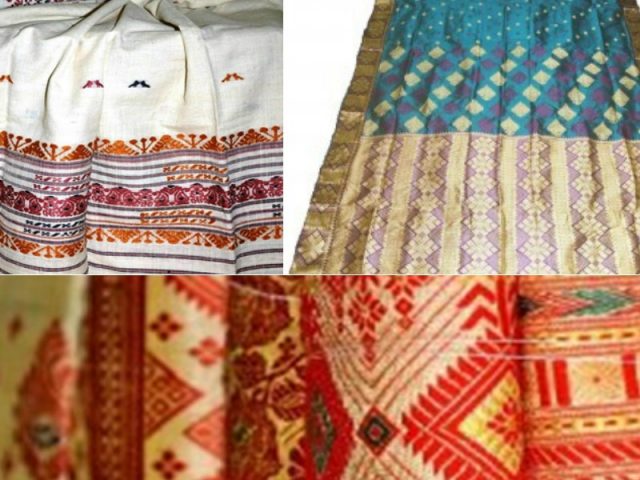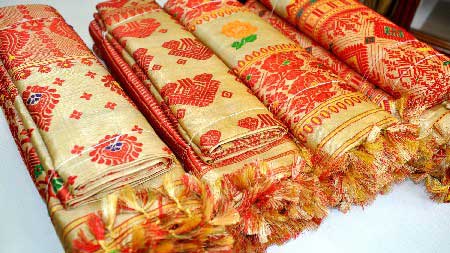The lustrous and soft material of silk is every Indian girl’s dream. Do you imagine yourselves in a silk saree or dress that feels like water to the touch? If your answer is yes, then Assam silk is something that needs your attention.
A major milestone was reached last year when Assam’s ace fashion designer Sanjukta Dutta was selected to design dresses for Hollywood celebrity for Cannes Film Festival 2018 Red Carpet event. Sanjukta has signed a contract with Cannes, officially confirming that she will design dresses for celebrities for the film festival.
What is Assam Silk?
Assam produces three natural wild silks- golden muga, white pat and the warm eri silk through the process of sericulture, also known as silk farming where silkworms are reared to produce silk.
Muga silk is produced by the muga silkworms, scientifically known as Antheraea assamensis. Golden yellow silk thread is derived which is rare due to its texture, luster and durability. Pat silk is produced by the Bombyx textor, a mulberry silkworm that feeds only on mulberry leaves. Brilliant white or off-white coloured silk thread is derived and is mostly used for its very bright texture.
Eri silk, also known as Errandi or Endi, comes from the silkworm Philosamia ricini and Samia ricini. P.ricini, which feeds on castor oil plant leaves and hence gives it the name castor silk. Fine, white, soft silk thread is produced that have wool or cotton like appearance, popular as shawls and quilts.
Manchester of the East
Sualkuchi, the production house of silk is often called the Manchester of the state.
Situated some 30 km from Guwahati, on the bank of the river Brahmaputra, this village is the centre of the production of silk fabrics.
Related: Winter Styling Tips For Indian Clothes
A Cocoon of Silk!
Have you ever imagined silk threads coming out of worms? Certainly an irksome idea, right?
Thousands of eggs are laid by the silk moth and larvae or silkworms form after hatching of these eggs. The larvae feed on mulberry leaves and slowly start forming the cocoon.
The silkworm spins a filament of about 900 metres or one mile to the maximum and it encases itself within two to three days.
The worm intact cocoons are then boiled and the outside end of the filament of silk is retrieved by brushing the undamaged cocoon.
The silk at this stage is called raw silk. Later, a de-gumming process is done by boiling the silk in soap and water, resulting in soft and lustrous silken threads.
The Colours
The Muga silk is especially noted for the deep golden colour and shine it brings to the making.
In fact, the shine of the fabric is said to improve after each wash making it a product that will last you a lifetime, also making it one of the costliest silks in the world.
An original piece of work can cost you anywhere between Rs. 10,000 to Rs. 1,50,000 for the cloth.
The Challenges
The basic problem this labor intensive industry faces today is the non-existence of price control.
For example, the price of a piece of cloth is the same as it was five years ago with very minor increase. This affects the quality of cloth. To make up for the losses, a large number of producers are resorting to mixing other elements in the cloth.
A promotion of this sort at the Red Carpet Festival of Cannes would definitively put its popularity as well as production to a rise since it still remains in the dark amidst the mainstream fashion industry of the country.
Among Assamese women however, the silk mekhela chador is a fashionable favorite.
Image Credits: Google Images
Sources: Research and Reviews, Gaatha, The Ethnic Soul
You’d Also Like To Read:
http://edtimes.in/2017/12/komal-saul-the-ready-to-eat-rice-variety-from-assam-that-cooks-on-its-own/








































